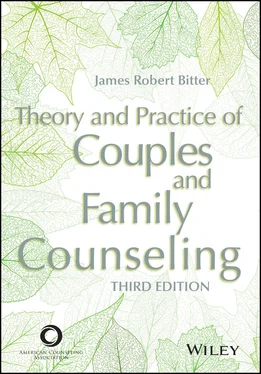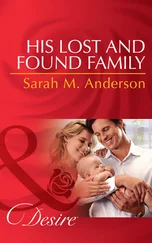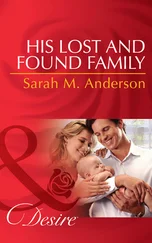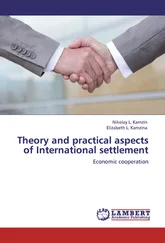James Robert Bitter - Theory and Practice of Couples and Family Counseling
Здесь есть возможность читать онлайн «James Robert Bitter - Theory and Practice of Couples and Family Counseling» — ознакомительный отрывок электронной книги совершенно бесплатно, а после прочтения отрывка купить полную версию. В некоторых случаях можно слушать аудио, скачать через торрент в формате fb2 и присутствует краткое содержание. Жанр: unrecognised, на английском языке. Описание произведения, (предисловие) а так же отзывы посетителей доступны на портале библиотеки ЛибКат.
- Название:Theory and Practice of Couples and Family Counseling
- Автор:
- Жанр:
- Год:неизвестен
- ISBN:нет данных
- Рейтинг книги:5 / 5. Голосов: 1
-
Избранное:Добавить в избранное
- Отзывы:
-
Ваша оценка:
- 100
- 1
- 2
- 3
- 4
- 5
Theory and Practice of Couples and Family Counseling: краткое содержание, описание и аннотация
Предлагаем к чтению аннотацию, описание, краткое содержание или предисловие (зависит от того, что написал сам автор книги «Theory and Practice of Couples and Family Counseling»). Если вы не нашли необходимую информацию о книге — напишите в комментариях, мы постараемся отыскать её.
Theory and Practice of Couples and Family Counseling — читать онлайн ознакомительный отрывок
Ниже представлен текст книги, разбитый по страницам. Система сохранения места последней прочитанной страницы, позволяет с удобством читать онлайн бесплатно книгу «Theory and Practice of Couples and Family Counseling», без необходимости каждый раз заново искать на чём Вы остановились. Поставьте закладку, и сможете в любой момент перейти на страницу, на которой закончили чтение.
Интервал:
Закладка:
Next there is the macrosystem , which affects each of us. In one sense, the word “macrosystem” should be plural (“macrosystems”). After all, we often live in multiple cultures, in either developing or developed countries with different levels of socioeconomic status, ability, and ethnicity. We are born into different genders, and we must learn to get along with these other genders—and the macrosystem of society is often a strong influence on how we work out those relationships with the other gender. All systems above the child (parents, teachers, religion, the workplace, culture, and one’s location on earth) are all macrosystems.
Finally, there is the chronosystem , or the pattern of environmental events and transitions that occur over the life of the individual, the couple, and/or the family. In couples and family counseling, we note the development of the chronosystem across the family life cycle (McGoldrick et al., 2015). We also track the effects of the chronosystem by noting the sociohistorical development of the family over several generations, usually through the use of a family genogram (McGoldrick et al., 2020).
Ecological systems theory states that each system and subsystem contains roles, norms, and rules that shape the psychological development of the individual and recursively impact the couple or family and other systems with which these systems interact. The models we will study in this book address various levels of the ecological system, and each brings a slightly different perspective or lens to our understanding of families.
The Family and Macrosystems, Normal Family Processes, Diversity, and Resiliency
The other night, my spouse and partner in our dual-career, heterosexual family turned on some old TV programs. Her favorite is The Andy Griffith Show , which was in certain ways amazing for its time. It concerns a family headed by a single father, who is supported in the raising of his son by a member of his extended family. If you want to know how remarkable this arrangement was, all you have to do is look at the competition: The Donna Reed Show , I Love Lucy , Leave It to Beaver , The Ozzie and Harriett Show , and Happy Days . However, like Andy Griffith’s Mayberry, all of these families were White; all of the children were parented by a man and a woman, even when the Andy Griffith character was determined to stay single; and all of them lived in idyllic small towns in America with little or no diversity and children who seldom had difficulties greater than could be called squabbles. And all problems were solved in 30 minutes or less. Why do we old folks—and even some younger ones—like watching this mythological, idealized picture of a past that never really existed?
In part, I think it is because all of us long for the safety and security of a stable family. And even people who grow up in decidedly unstable families believe that the stable ones are out there somewhere. I should mention that we also watch reruns of The Cosby Show , a landmark program that presented Black, upper-middle-class families more realistically than any of its White predecessors. And now some members of my family watch Modern Family or black-ish , programs that often demonstrate how differently we see family life in America in this new century.
Froma Walsh (2016a) posed the question “What is a normal family?” (p. 4). After noting Michel Foucault’s criticism that normality is often defined by dominant (privileged) groups, codified by religion and science, and then used to pathologize those who do not fit the definition, she carefully demonstrated that normal families are not problem free, that statistical averages are a poor way to arrive at a description of normal, and that socially constructed ideals of a healthy family have real negative effects on actual families. Still, there must be some way to assess normal.
Bronfenbrenner’s ecological systems model gives us an avenue for considering normal family processes (Walsh, 2016a). This model suggests that we view families from multiple perspectives, taking into account the “recursive influences of individual and family functioning,” in which
each family’s capabilities and coping style are considered in relation to the needs of individual members and to the larger community and social systems in which the family is embedded. Family functioning is influenced by the fit , or compatibility, between individuals, their families, and larger social systems. (p. 7)
Family systems theorists have long preferred words like “functional” and “dys-functional” to “healthy” or “unhealthy” or “normal” or “abnormal.” They recognized early on that references to unhealthy or abnormal had a pejorative connotation. Unfortunately, over time, functional and dysfunctional came to be experienced as derogatory too. So until someone invents new language, let us carefully define what functional and dysfunctional mean here. Functional describes family processes that are successful in meeting developmental demands, facing and handling normative and nonnormative stressors, and helping families reach their shared goals. Dysfunctional refers to a breakdown in coping or the continued use of couple or family patterns that are no longer successful in helping the family reach its goals. In this sense, it “is preferable, and less stigmatizing, to identify particular family processes or relational patterns that are dysfunctional and not to label the family” (Walsh, 2016a, pp. 8–9).
Family life in Western societies has always been diverse, and in the 21st century it is increasingly so. Here are just a few of the statistics:
Since 1960, the percentage of married adults has dropped from 70% to just over 50%.
The average age at which people marry is now 28 for men and 26 for women, 6 years later than couples in 1960.
Many couples today exercise the option not to have children; most of these couples, however, choose to raise a pet.
More than 50% of all adults will cohabit sometime in their lives, and most of these people will think of it as a step before marriage.
A growing number of couples are in stable, intimate relationships but living apart.
A total of 25% of all households are headed by single parents, 85% of whom are women; 40% of all children are born outside of marriage, and half of these children have a female single parent who is still living with the child’s father.
Dual-career/dual-earner families make up two thirds of all two-parent households.
Since 1980, the divorce rate has peaked and then declined to around 45%; most divorced people remarry.
Remarriage often results in the creation of stepfamilies, and 60% of these marriages fail.
Both single parents and couples have been adopting more; most adoptions are now open, and keeping siblings together in an adoption is a primary goal.
Two decades of research has demonstrated that children raised by gay men or lesbians do just as well as children raised by heterosexual parents.
Lesbian couples are more likely to truly share household and child-rearing responsibilities, engage in cooperative decision-making, and have high levels of parental involvement with the children.
The flow of families coming to the United States from Asia and Latin America is 3 times what it was before the turn of the century, and Hispanics are becoming the largest minority group.
Immigrant families are often more resilient in the face of challenges than native-born families.
Poverty is affecting more families today than a decade ago, with African Americans, Hispanics, and female-headed households getting hit the hardest.
Because people are living longer, it is increasingly likely that individuals will have several committed coupled relationships over a lifetime.
Читать дальшеИнтервал:
Закладка:
Похожие книги на «Theory and Practice of Couples and Family Counseling»
Представляем Вашему вниманию похожие книги на «Theory and Practice of Couples and Family Counseling» списком для выбора. Мы отобрали схожую по названию и смыслу литературу в надежде предоставить читателям больше вариантов отыскать новые, интересные, ещё непрочитанные произведения.
Обсуждение, отзывы о книге «Theory and Practice of Couples and Family Counseling» и просто собственные мнения читателей. Оставьте ваши комментарии, напишите, что Вы думаете о произведении, его смысле или главных героях. Укажите что конкретно понравилось, а что нет, и почему Вы так считаете.












